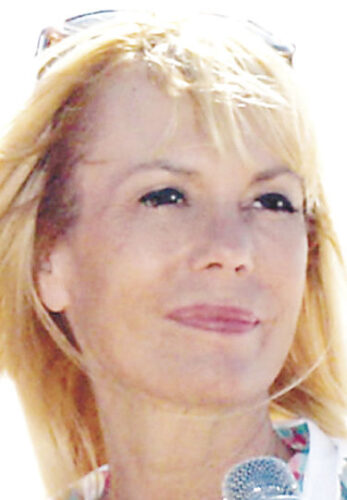Tech Matters: Introducing the new image generator in ChatGPT

Photo supplied
Leslie MeredithIf you’ve ever tried to get AI to make an image with text in it — like a fake magazine cover or a birthday invitation — you probably saw something that looked like a ransom note written in reverse. Words were misspelled, letters jumbled, spacing was off. That has changed.
The latest version of ChatGPT’s image generator, built into GPT-4o, is a big leap forward from the previous version. It’s still not perfect, but it’s finally usable. I’ve used it to mock up a magazine cover, and while it didn’t nail every detail, it was good enough to share the concept.
Let’s start with what’s new. You no longer have to rely only on a text prompt. You can now upload your own image to use as a reference or as a starting point to be enhanced and changed. ChatGPT uses that image and your instructions to generate something new — ideally better. In my experience, it’s a smarter way to work than starting from scratch with a prompt.
Yet prompts matter more than ever. You have to be specific. The more direction you give — on layout, colors, text placement, style — the better the result. If you want text in a certain spot, say that. If you want it to be a bold serif font in the top third of the image, include that too. The system now understands those kinds of details and, most importantly, can execute them without turning your request into gibberish.
Another improvement is consistency. Previously, if you asked the AI to tweak something — say, change a color or move a logo — you’d get a whole new design. It was frustrating and pretty much killed the idea of iteration. Now, ChatGPT holds on to your image and applies changes to that base image. Not always perfectly — it sometimes forgets small elements — but it’s much more reliable than before.
But there are still limits. OpenAI says the model can handle 10 to 20 distinct objects in a single image. That’s better than most tools out there, which typically max out at around five to eight. It’s also still just for digital use — the resolution isn’t high enough for professional print work. Think of this more like a design whiteboard or a brainstorming tool. Don’t plan to use it for a billboard or magazine cover unless you’re just showing a concept.
If you’re planning to make more than a handful of images, pace yourself. Demand has been so high that OpenAI has had to throttle access. Free-tier users don’t have access to the new image generator at all. Paid users — those on the $20/month ChatGPT Plus plan — can generate around three images a session, with short delays between requests. Co-founder Sam Altman posted on X that the company’s “GPUs are melting” and that rate limits were needed until things stabilize.
It’s also worth pointing out that safety guardrails are still in place. OpenAI blocks attempts to generate explicit images, nudity, graphic violence and anything involving real people in sensitive contexts. You can however generate adult public figures (not children), as long as the individual has not opted out via OpenAI. The company said safety is an “ongoing area of investment,” and they plan to adjust policies as they learn from real-world use.
So, who can benefit from this new tool? Designers and marketers looking for quick mockups or creative brainstorming will find it particularly useful. Small business owners can create social media graphics, presentation visuals or promotional images without expensive software or graphic design skills. Educators might use it to enhance learning materials or create engaging visuals for students. And if you’re working on a personal project — like making a digital scrapbook or designing a party invitation — ChatGPT’s image generator can help you get there faster, especially with its Canva integration. It’s also proving helpful for content creators who need quick visuals to go along with blog posts or newsletters.
In short, if you’ve been waiting for AI-generated images to become genuinely useful, this is the version to try. Just know what you’re getting — and what you’re not. It’s not Photoshop. But it’s pretty good at creating a starting point, especially when you pair a reference image with clear instructions. And if nothing else, it’s a fun new creative tool in the AI toolbox.
Leslie Meredith has been writing about technology for more than a decade. Have a question? Email Leslie at asklesliemeredith@gmail.com.



